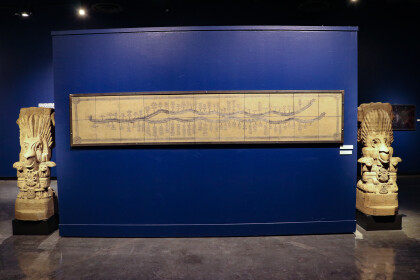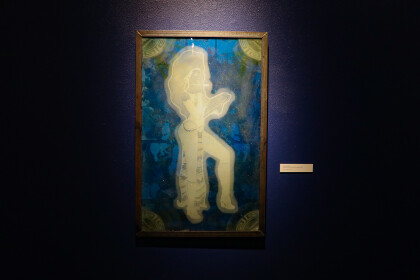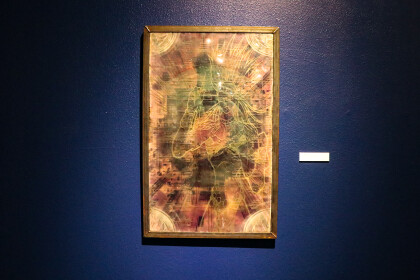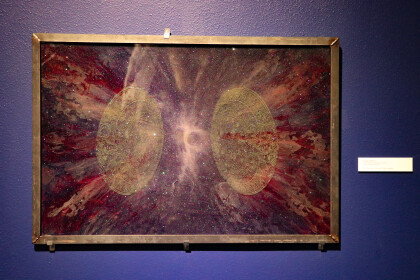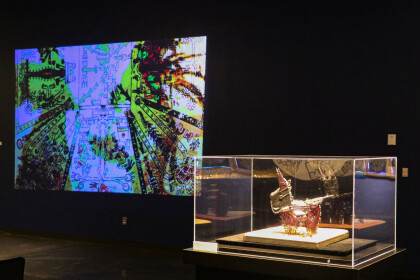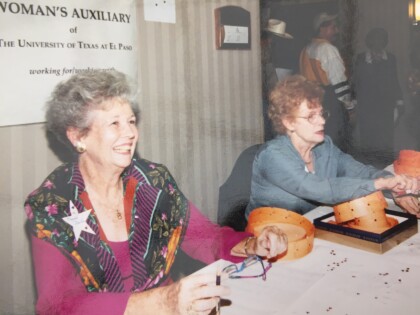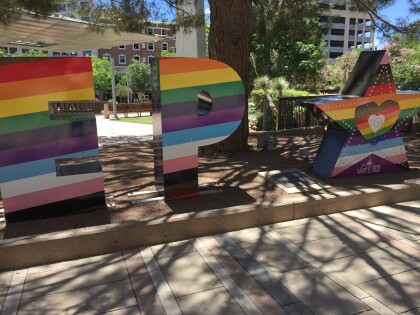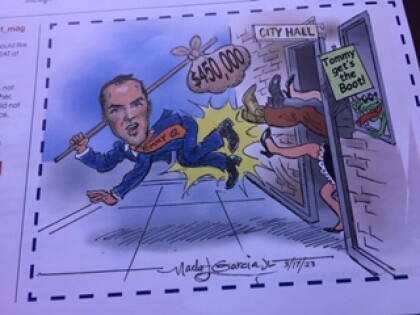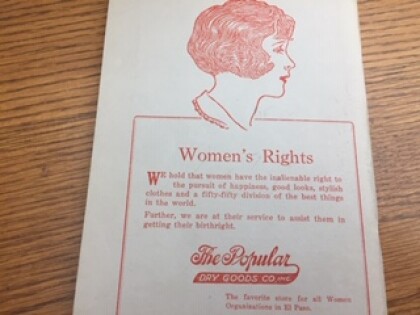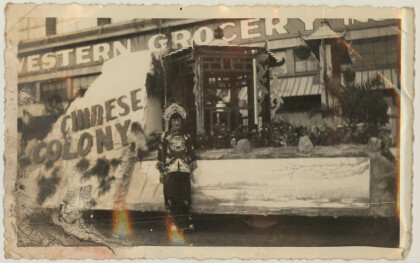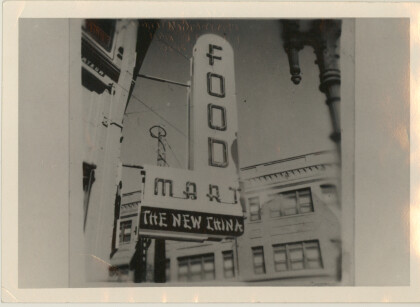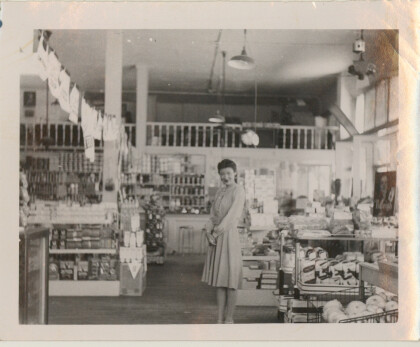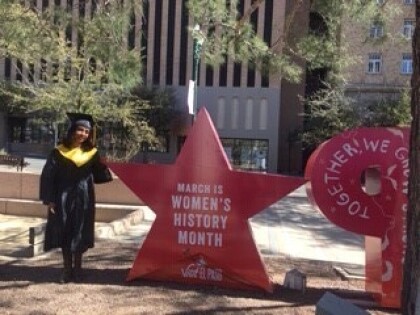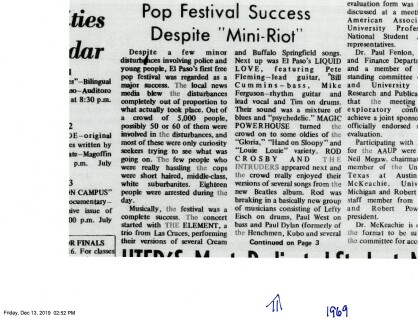Mapping Inequality & Reclaiming Place – Demolition of a Neighborhood

Mapping Inequality & Reclaiming Place – Demolition of a Neighborhood
In 1956, congress passed the Federal-Aid Highway Act and created a vast interstate highway network across the country. It encompassed a 41,000 system that connected populations of more than 100,000 residents. Completed in the 1990’s and at a cost of a hundred billion dollars, it profoundly changed the landscape of America and how citizens travel and conduct business.
Interstate 10 was one of the largest interstate highways built with a length of 2,500 miles. It spans from Jacksonville, Florida to Santa Monica, California. Interstate 10 made its way through El Paso in the early 1960’s. Much of the interstate would cut through existing El Paso neighborhoods such as Lincoln Park, Rio Grande, Downtown and Sunset Heights. Large parcels of land were bought out and families left their homes. Much of this demolition happened in El Paso’s then Eastside which included Lincoln Park Neighborhood, the epicenter for El Paso’s African American community. A large amount of homes and businesses were lost despite a nationwide protest to save these communities from erasure and possible health hazards coming from construction and automobiles.
This map from the “Mapping Inequality” project documents redlining in El Paso. Dating back to the 1930s, redlining was a widespread, discriminatory practice that started during the New Deal-era when the United States government began offering government-insured mortgages to prevent mass foreclosures during the Great Depression. As the program grew, the government began adding qualifications to who could qualify for these mortgages based on the value and location of homes. Color-coded maps were used to evaluate the risk associated with the loan and, across the United States, Black and other non-white neighborhoods were consistently deemed high risk and circled with a red line. By labeling these areas high risk, banks and other mortgage agencies were able to deny loans to people of color. Though redlining was ultimately deemed illegal under the Fair Housing Act of 1968, its effects are still felt today. Redlining inhibited families from upward economic mobility during an era of unprecedented economic growth post-WWII and also restricted movement within cities.
As a result, the majority of El Paso’s historic Black homes and businesses are located within these redlined areas. A current list of identified locations is available here on Google Maps: https://maps.app.goo.gl/4DW2ao2WTipU58G27
This object is currently on view in the El Paso Museum of History's newest exhibition Still We Rise: El Paso's Black Experience on view until January 2024.
Reportar esta entrada
Más sobre la misma comunidad-colección
The Uncolonized: A Vision in the Parallel Virtual Exhibition
Angel Cabrales
La Piñata Cosmica, 2019
...
The Uncolonized: A Vision in the Parallel Virtual Exhibition
Angel Cabrales
Insignias de Cultura, 2021
...
The Uncolonized: A Vision in the Parallel Virtual Exhibition
Angel Cabrales
Totems de Inteligencia, 2023 ...
The Uncolonized: A Vision in the Parallel Virtual Exhibition
Angel Cabrales
Axihuical (El Paralelo), ...
The Uncolonized: A Vision in the Parallel Virtual Exhibition
Angel Cabrales
Codex of the Interplanetary ...
The Uncolonized: A Vision in the Parallel Virtual Exhibition
Angel Cabrales
Apoteosis de la Zapotecnico ...
The Uncolonized: A Vision in the Parallel Virtual Exhibition
Angel Cabrales
Apoteosis del Mayamatica, ...
The Uncolonized: A Vision in the Parallel Virtual Exhibition
Angel Cabrales
Cemmani Cemanahuatl, 2023
...
The Uncolonized: A Vision in the Parallel Virtual Exhibition
Angel Cabrales
Gallery View of The Uncolonized: ...
The Uncolonized: A Vision in the Parallel Virtual Exhibition
Angel Cabrales
Gallery View of The Uncolonized: ...
The Uncolonized: A Vision in the Parallel Virtual Exhibition
Angel Cabrales
Gallery View of The Uncolonized: ...
Women working for student scholarships
The Women's Auxiliary of University of Texas at El Paso has ...
Pride display in San Jacinto Plaza, downtown, El Paso,TX 2023
This is one way city of El Paso celebrates Pride Month. ...
Political Cartoon from the El Paso Times.
Political Cartoon from the El Paso Times relating former El Paso ...
Popular supports suffrage on back cover of 1925 pamphlet listing members of Women's Organizations of El Paso TX
Popular supports suffrage on back cover of 1925 pamphlet listing ...
Photograph of Herlinda Chew Posing with Chinese Colony float - El Paso Sun Carnival Parade
Photograph of Herlinda Chew Posing with Chinese Colony float - ...
Photograph of The New China Grocery store sign
New China Grocery, at 200 S. Stanton St. Owned by Antonio and ...
Photograph of Herlinda Chew inside New China Grocery
Photograph of Josephine or Grace Chew (the elder daughters of ...
Women History Month sign at San Jacinto Park. Easter Sunday 2024.
Women History Month sign at San Jacinto Park. Easter Sunday ...
Article about El Paso Pop Festival, 1969 part 1
A July 11, 1969 The Prospector clipping about the success of El ...




